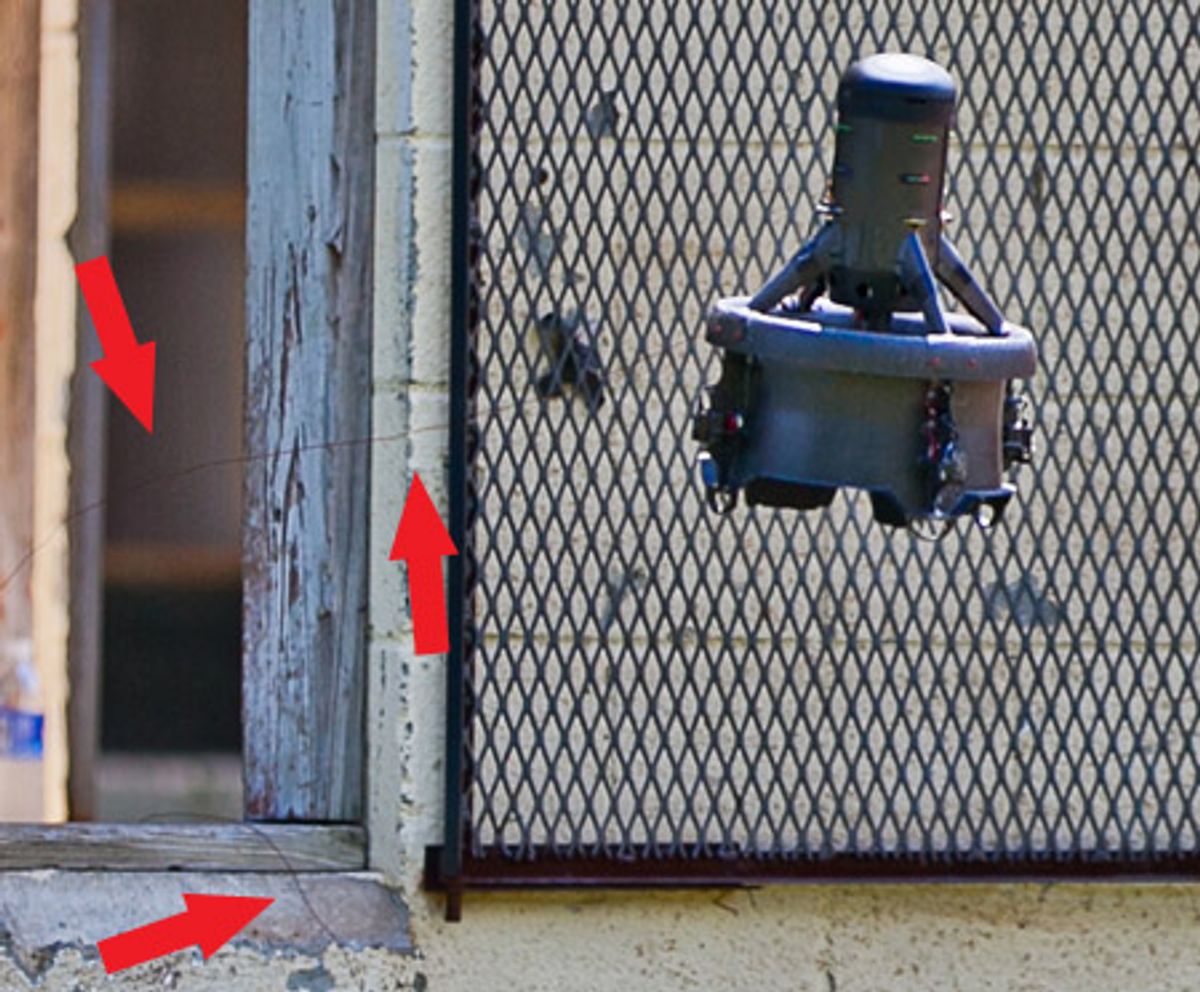Ex-iRobot founder Helen Greiner's new company, CyPhy Works, has been doing something secret involving drones for the last several years, and as of today, we've found out what it is: UAVs that can operate for "unlimited" amounts of time. It's not some sort of fancy fuel cell or wireless power transfer technology; rather, if you look closely at the image above, you'll see that CyPhy's UAVs are using a new solution that is actually very old: an unbroken, continuous cable that connects the UAV to its ground station at all times.
My first reaction to this system can best be described as, "uh, what?" I mean, a tether? Tethers are things that robots used to use before we had wireless communications and batteries that didn't suck. Tethers (or "cables," as CyPhy would much prefer that you call them) do have a number of significant advantages, however. You can stream high quality, high definition video through them instead of that lousy jumpy stuff that you get wirelessly. You can send commands and receive sensor data quickly and reliably. You don't have to worry about interception and jamming or GPS denial. And perhaps most importantly, having a physical connection to the vehicle allows you to send power to it, which is where the "unlimited duration" comes in.
That's all great stuff, but there's one big disadvantage to being tethered: being tethered. CyPhy is probably cringing here because they absolutely hate the "T" word and call it a microfilament instead, in that the word "tether" implies exactly what you're thinking: something that restricts movement. If you're clever, though, it doesn't have to. As Greiner describes the system to AUVSI:
“The biggest problem with ground robots today is they send them inside a building, they go down the stairs, no comms, they go around the corner, no comms. You go into a bunker and it’s got some rebar and you don’t get comms,” Greiner says. “With the filament, basically you get high-definition video images all the time, and then it has the added advantages in that it can’t be jammed, it can’t be spoofed, it can’t be intercepted.” The tether spools from the vehicle so it won’t get tangled. Should it happen to snag or break, the vehicle can use its battery power to fly back to its point of origin.
It sort of seems like using a
tether
microfilament is risky seeing as a well-placed cat could potentially cause serious problems, but the idea is that the robot unspools the tether behind it as it goes, so the tether is not ever actually moving. If it snags on something, that's fine, because the snag stays where it is as the robot lets out more cable. In fact, there's never any tension on the tether itself, which is part of the reason that it can be so thin. And as Greiner says, if something does happen to the cable, the robot can still make it back to base on battery power.
CyPhy has (so far) two platforms using this technology. The one in the picture at the top is called the Extreme Access System for Entry (EASE), and it's designed to operate in indoor environments, with that ducted fan design allowing it to run into things without instantly obliterating itself. It can launch, hover, and land automatically, and by hot-swapping batteries at the base station, it can keep going for hours at a time. Here's a video which I think shows EASE in operation with its tether, although the resolution of the video isn't high enough to be able to tell for sure:
The other platform is called the Persistent Aerial Reconnaissance and Communications, or PARC. It's a more traditional quadrotor design that doesn't come equipped with an on-board cable spooler, being intended more for perch-and-stare missions without the perch. It has gimbal-mounted gyrostabilized color and thermal cameras, and can hover at 1,000 feet for 12 hours at a stretch.
CyPhy's drones have already undergone testing with the military, and while the company says that its products are great for civil use too, it seems like the primary focus, at least initially, will be on surveillance. We're not sure if CyPhy actually has any orders yet, but they have plenty of venture funding and military grants, and we're certainly looking forward to watching this idea evolve.
[ CyPhy Works ]
Evan Ackerman is a senior editor at IEEE Spectrum. Since 2007, he has written over 6,000 articles on robotics and technology. He has a degree in Martian geology and is excellent at playing bagpipes.






